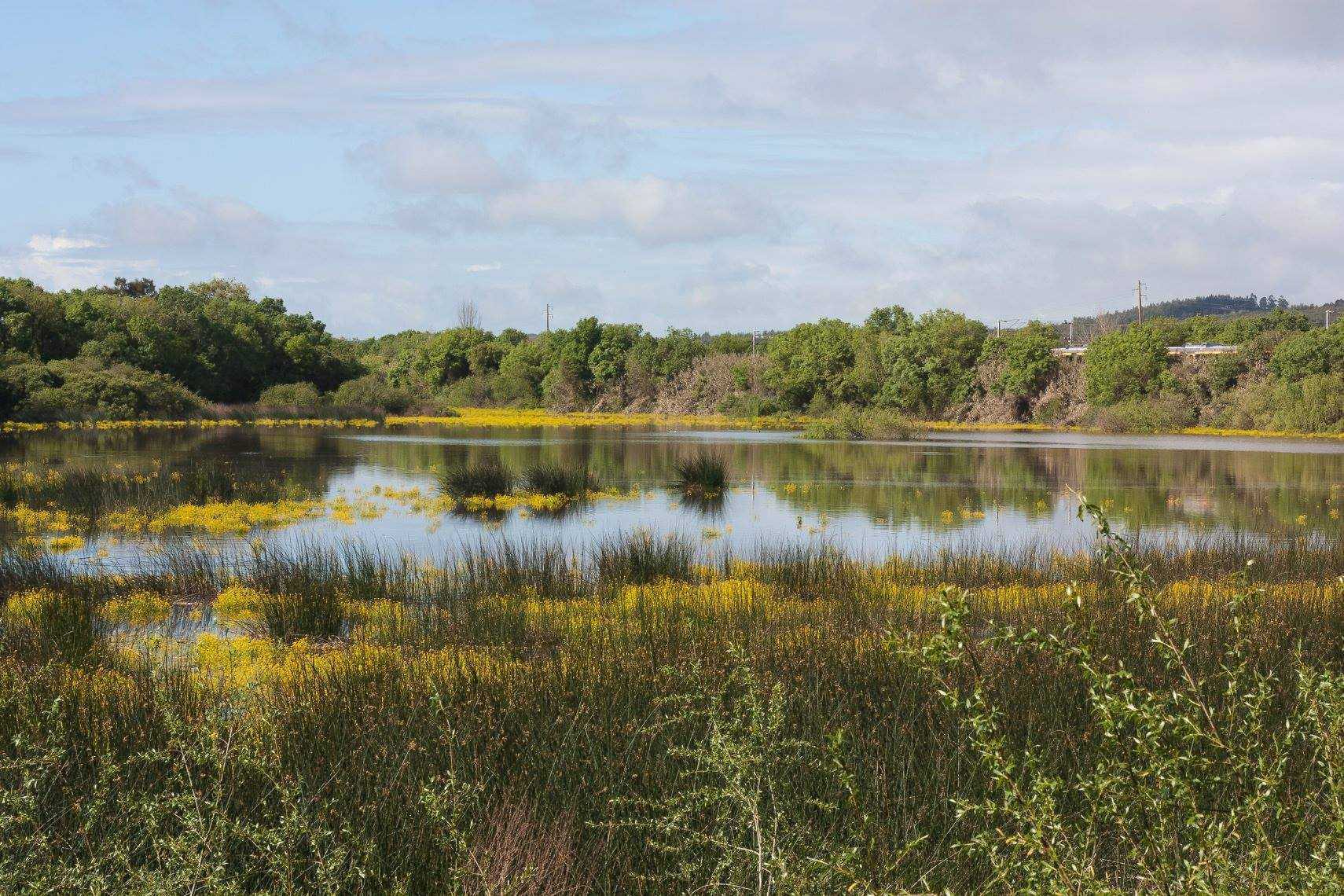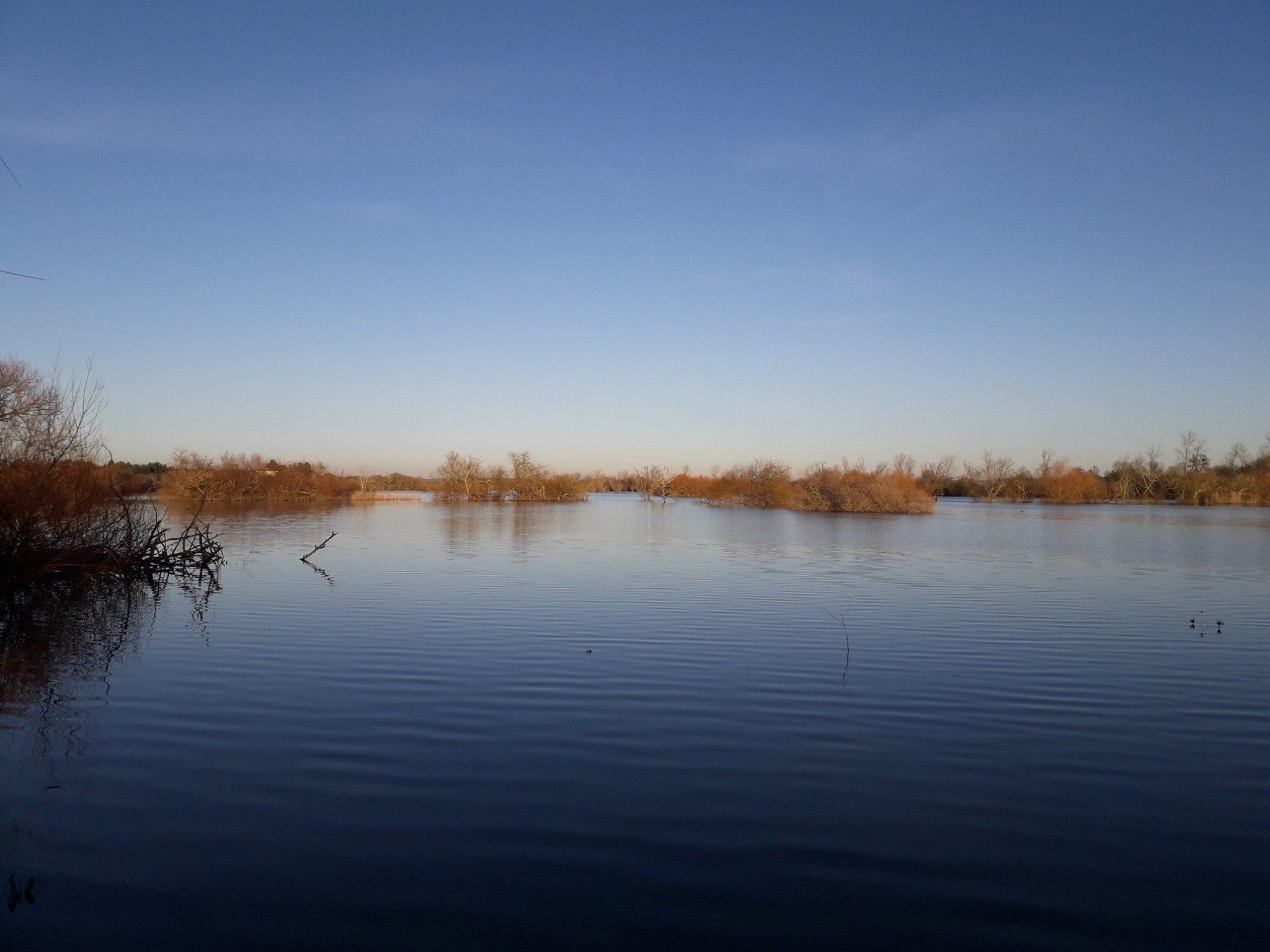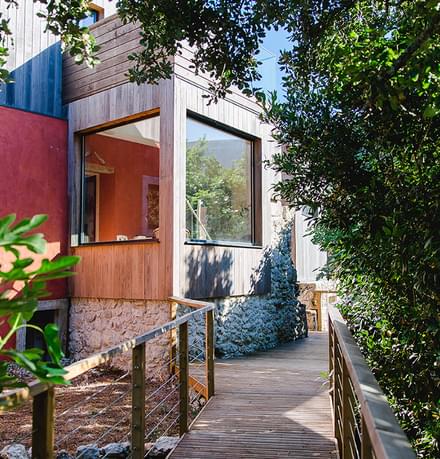Situated on the left bank of Tagus River, the Natural Reserve of Paul do Boquilobo follows a section of Almonda river born in the Mountain of Serra de Aire e Candeeiros that flows to the right bank of Tagus. The Portuguese Central St. Jame’s Way connecting Lisbon to Santiago de Compostela crosses the very heart of Natural Reserve of Paul do Boquilobo.
Created in 1980, it was actually the first protected area in Portugal to be included in the World Network of Biosphere UNESCO Reserves, namely in 1981. It occupies an area of 5896 ha within the councils of Torres Novas and Golegã.
Its central area, with restricted access, is permanently flooded, with natural and semi-natural vegetation formations, intended for nature conservation and scientific research and with important functions in flood control during the winter and water storage during the summer.
It has habitats of an absolutely exceptional nature: standing water, natural and artificial eutrophic lakes, permanent and intermittent watercourses, Quercus spp. forests, humid grasslands, oak woods (Quercus faginea and Quercus canariensis) and gallery forests (Salix alba and Populus alba). It has 317 classified plant species, most of them well adapted to the lack of soil aeration characteristic of wetlands.
The existence of a population of Narcissus fernandesii, native of the Iberian Peninsula, considered to be under threat, is noteworthy. It is currently the largest nucleus within a Protected Area and the second largest in Portugal.
In permanently flooded areas, such as the reed (Phragmites australis), the tabúa (Typha dominguensis), the espadana (Sparganium erectum ssp. negletum), the yellow lily (Iris pseudacorus), dependent on the water and the sun.
In temporarily flooded areas, willows dominate, especially white willow (Salix alba), which form small islands of vegetation and even dense woods.
But if the grey heron (Ardea cinerea) is sedentary and the grey heron (Ardea cinerea) is one of the species that uses Paul mainly during the winter season, with the increase in temperature and the length of the day, large colonies of little egret (Egretta garzetta), cattle egret (Bubulcus ibis), and purple heron (Ardea purpurea) start to arrive.
Marvel here at the largest colony of herons on the Iberian Peninsula, concentrated in these stagnant waters. In the words of Gonçalo Pereira Rosa, editor-in-chief of National Geographic Portugal, “this is the kingdom of the heron”.















